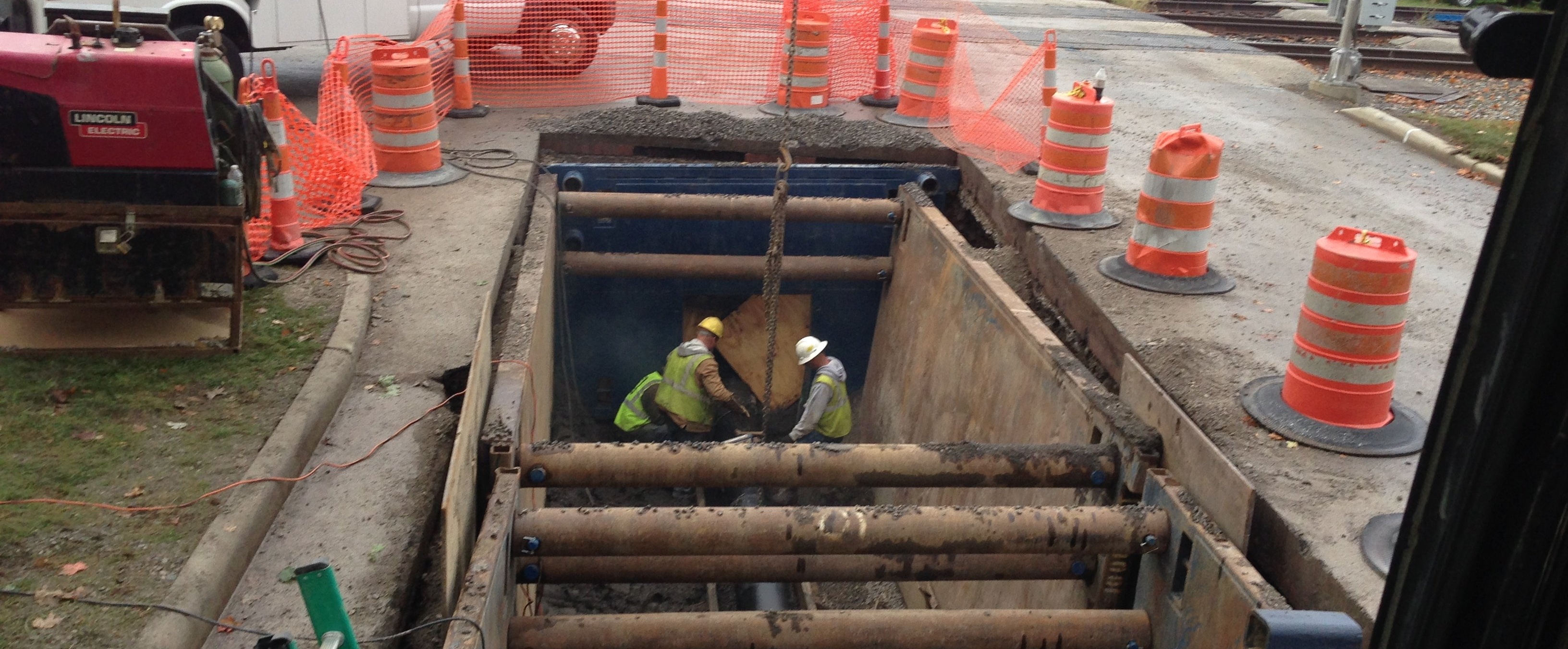
The best solution depends on what's causing the issue in your water and sewer lines, and how bad the damage is.
Keep in mind, waiting until the last minute to fix your pipes could create even more issues. The damage can get worse very quickly, and create a very expensive problem for your commercial property (and even the surrounding community).
Related: 11 Underground Water Leak Signs You Shouldn’t Ignore
When You Need to Replace Your Pipes
You'll likely need to replace your underground utilities if they fail due to aging.
New underground utility pipes are typically built from galvanized steel, ductile iron, HDPE, or PVC. They’re very durable and last much longer than older pipes.
Pipe replacement is also the best option for most municipal projects. It helps with updating old roads and underground infrastructure.
After tearing up a section of roadway, the water and sewer lines can be removed and replaced easily. It’s more sensible to address overall infrastructure upgrades in one project, rather than risk re-excavating new roadway for costly repairs in the near future.
What does pipe replacement mean for me and my property?
Pipe replacement involves excavating down to the pipe level. This may require reseeding or repaving the surface.
Replacing underground pipes can be costly (unless it requires only a shallow dig). But it has long-term benefits - your underground utilities probably won't have issues for decades.
When You Can Use Pipe Lining
Pipe lining is sometimes better for properties where:
- Excavation is difficult or impossible, or workspace is limited (e.g. unstable ground, narrow access points)
- Underground utilities are mostly still working fine
- Your budget doesn't permit full replacement at this time
- An emergency patch is needed, but replacement is in the works
- Other locations on the pipe system CANNOT experience service disruption for whatever reason
What does pipe lining mean for me and my property?
Lining pipes is a stop-gap measure that can add years to your underground utilities' useful life. The lining coats the pipes from the inside to strengthen the walls, and stop water inflow and infiltration (where groundwater gets in and upsets the system's balance).
Where replacement means service along the entire pipe is down, lining limits service disruption in other locations connected to the same water and sewer systems.
Lining does NOT address:
- Pipe sagging
- Failures due to natural earth shifting
- Pipes that are too damaged to function
Generally, replacing your underground pipes will provide the best long-term payoff.
You need your underground utilities to hold up for years. Once they’re buried, they perform critical functions and can’t be ignored.
An up-front investment in a full pipe replacement today promises minimal, if any, maintenance costs later.
For more information on underground utilities, check out the following resources:
11 Signs of an Underground Water Leak
Underground Utility Quality Assurance Checklist



